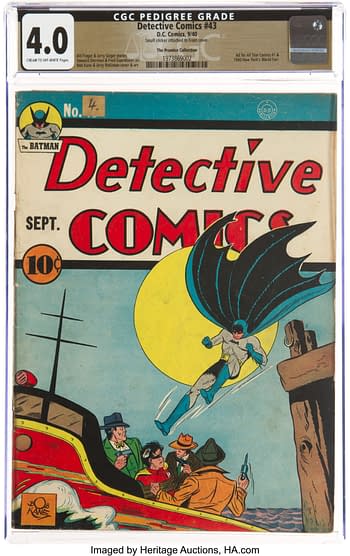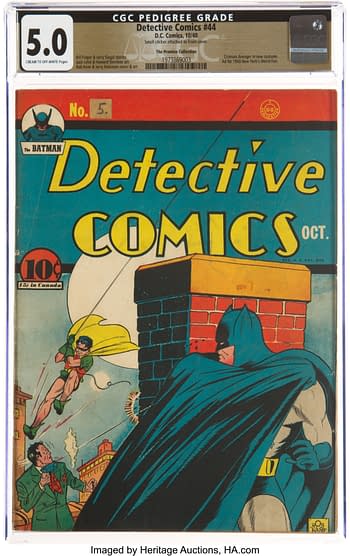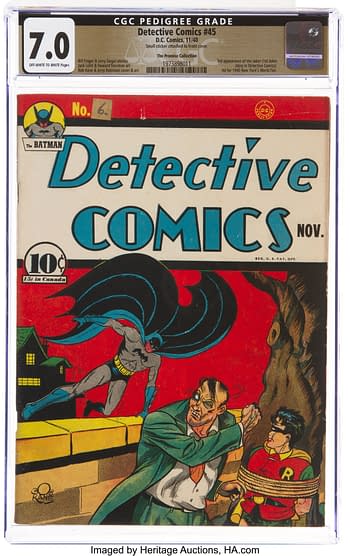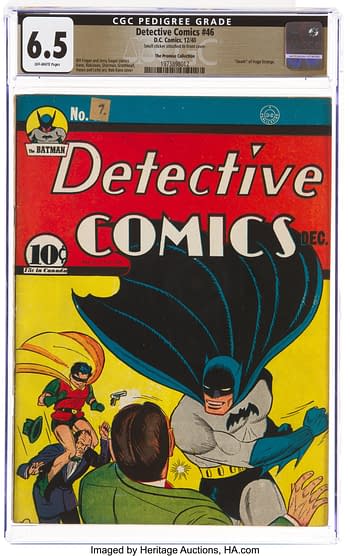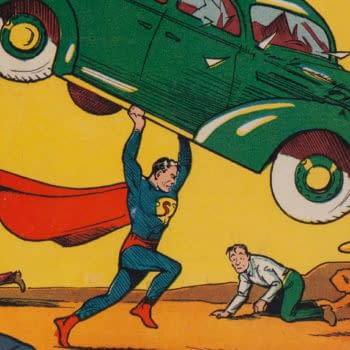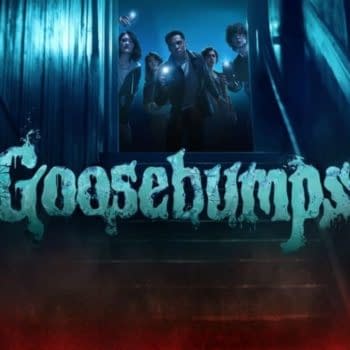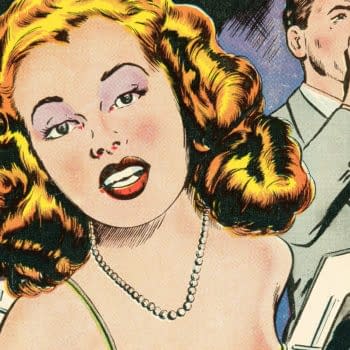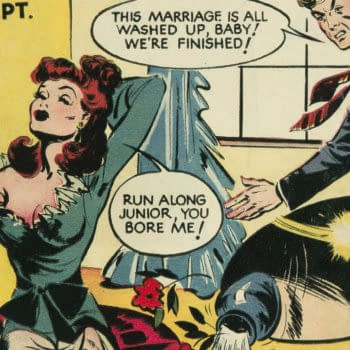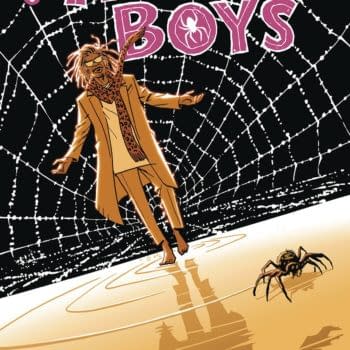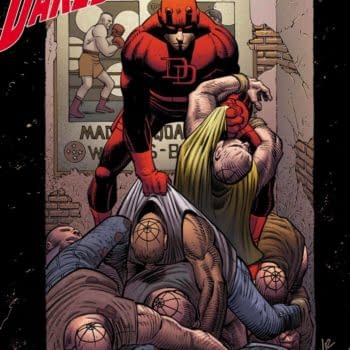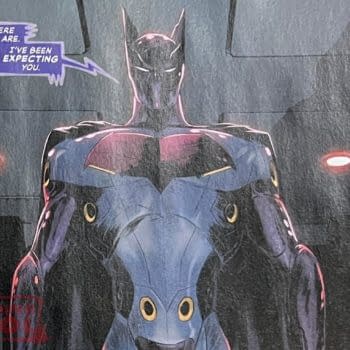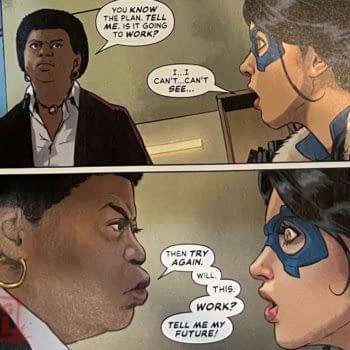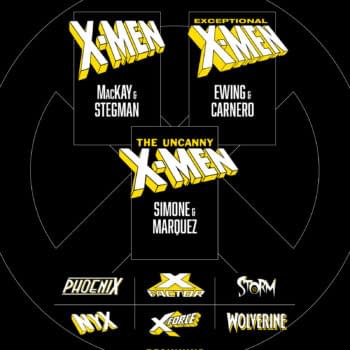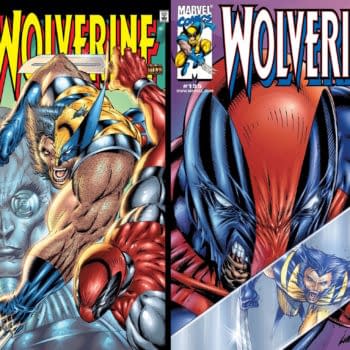Posted in: Comics, Vintage Paper | Tagged: Batman, detective comics, Promise Collection, Whiz Comics
The Promise Collection 1939/1940: It Begins With Batman
The Promise Collection is a set of nearly 5,000 comic books, 95% of which are blisteringly high grade, that were published from 1939 to 1952 and purchased by one young comic book fan. The name of the Promise Collection was inspired by the reason that it was saved and kept in such amazing condition since that time. An avid comic book fan named Junie and his older brother Robert went to war in Korea. Robert Promised Junie that he would take care of his brother's beloved comic book collection should anything happen to him. Junie was killed during the Korean War, and Robert kept his promise. There are more details about that background in a previous post regarding this incredible collection of comic books. And over the course of a few dozen articles in this new series of posts, we will also be revealing the complete listing of the collection.
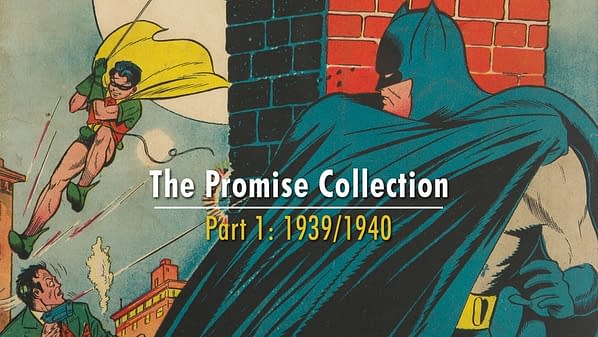
This collection began to hit the market on June 18, 2021, with astonishing results. For example, the first appearance of the Riddler in Detective Comics #140 went for a record $456,000. Phantom Lady #17 with Matt Baker cover and art also went for a record $456,000. At the time of this writing, the collection continues to be auctioned off in Heritage Auctions' Sunday and Monday Comic Books Select Auctions, with a larger group coming up in the 2021 September 9 – 11 Comics & Comic Art Signature Auction #7246. We'll soon be detailing the sales of the collection along with some general stats as part of something that will grow into a Promise Collection hub over the next several weeks and beyond. We intend for this hub to become a living history of sorts for the collection and the people who continue to enjoy and appreciate it to this day. Part of the inspiration for this approach is hearing about underappreciated moments in collecting history such as the era when the Edgar Church / Mile High collection came to market, or the 1995-era moment when Steve Geppi unveiled the Robert Overstreet collection to a group of serious collectors. Or even all those times when comic book collecting became news.
Such moments are an underrated component of comic book history. There tends to be a divide between vintage comic book collecting and other aspects of comic book history that really need not exist. Because the very best collections are time machines. With just a little effort, they can take you back to what the world was like when these comics were new. Great collections help us understand the people who assembled them and the history of which they were part. Readers and collectors such as Edgar Church, who amassed a collection of nearly 15,000 comics 1937-1957, Davis Crippen, who bought and saved some 13,000 comics 1940-1955, and Lamont Larson, who collected over 1,000 comic books 1936-1940, are all legendary names to many who collect vintage comic books, and their collections and those of others give us historical insight into comics history.
The intent of this series of posts is to provide context for the comic books comprising the collection that goes beyond the CGC label notes and auction listings for the comics in question. That said, the series will generally supplement the history embodied in these comics rather than reviewing much already-covered historical ground. Think of it as the liner notes for the comics in the collection. As we step through the collection year by year, these posts will also reveal — moment by moment — a complete listing of the 4,982 comic books which comprise the collection. Images and CGC grades for the comics from the time frames discussed will be added as they become available.
One thing that is important to note at the outset of this series is that the consignors of these comics wish to remain anonymous. Beyond the information that has already been released, nothing in this series of posts should be considered as being specific to Junie himself, save for this: the information released by the family indicates that he died at the age of 21 during the Korean War, which given the parameters of the collection suggests that Junie was around eight years old when the collection started in 1939. I've also been told that Junie read every one of these comics, so the stunning condition of most of them also gives us some perspective here. Junie seems to have been both reader and collector whose fandom began at a historically fascinating moment. World War II was part of what forged the modern American comic book industry into what it is today, and what came next that made us realize that we often don't leave comic books behind when we grow up. The story of the comic books behind the Promise Collection is the tale of a young boy who grew up reading comic books during World War II, went to fight in the Korean War, and never returned. The story of the Promise Collection is also the story of modern American comic books coming of age.
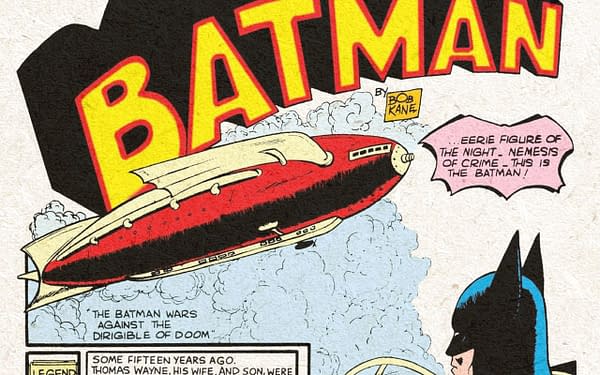
1939 and the Beating Drums of War
It's hard to overestimate how important the events of 1939 have been to the direction of the modern comic book publishing industry. Early in the year, Superman continued his climb to prominence, Batman was introduced in Detective Comics #27, and DC Comics sued rival publisher Victor Fox over the character Wonderman's similarities to Superman in Wonder Comics #1. The 1939-1940 New York World's Fair opened on April 30, 1939 and would soon loom large over the shape of things to come in comic books, as we shall see numerous times in this series. The First World Science Fiction Convention was held in July, and would also influence popular fiction and the people who created it over time.
By mid-year, the likes of Centaur Publications and Quality Comics would respond in various ways to the rise of Superman just as Victor Fox would continue to do, even with the threat of DC Comics' lawsuit hanging over him. Marvel Comics, MLJ, Harvey, Hillman and Fawcett among others would follow by the end of the year. There were about 20 comic books on newsstands in the United States in January 1939, and by December of the year, there were 42. But one factor above all others in 1939 influenced the shape of the comic book industry and the people who read comic books: the onset of World War II.
Detective Comics #33 (cover-dated November 1939, Library of Congress copyright date September 30, 1939, which by the governing law of that time was meant to be the earliest date on which the item was made available for sale) is the earliest comic book in the Promise Collection. The issue is well known to collectors because the story of Batman's origin is told here for the first time, in 12 concise panels that take up about one and a half pages at the beginning of the comic. It is a now-legendary origin moment: a thief stops the Wayne family on their walk home from the movies, takes Martha Wayne's necklace, and murders both Thomas and Martha before young Bruce's terrified eyes. Bruce Wayne vows to spend the rest of his life "warring on all criminals", and proceeds to train both his body and mind to their limits. "Criminals are a superstitious and cowardly lot" he ultimately reasons, and as if in answer, a huge bat flies in his open window. "It's an omen. I shall become a bat."
One widely-repeated newspaper tidbit from the early 20th century seems to anticipate Bruce Wayne's opinions on the subject of criminals here: "The thief born and bred in the slums is always superstitious and cowardly. He believes in the power of witches, omens, and the protecting properties of amulets, talismans and charms, and when searched at the police office there are usually found in his pocket or concealed about his person bits of coal, rusty horseshoe nails, lucky stones and rings." Becoming a bat seems an appropriate reaction to such superstition.
We don't think of Batman stories of this era as being particularly war-influenced, but the 12 page Batman story in Detective Comics #33 is very much a product of 1939 — it's essentially a thinly-disguised war story. A veritable army calling itself the Scarlet Horde is lead by a self-styled Napolean who aims to become dictator of the world. The Scarlet Horde attacks Manhattan (as Batman's home city is called in this story) using a "rocket-like" dirigible of doom, which kills thousands in the city amidst scenes of destruction on a massive scale. The issue was released in the wake of newspaper headlines discussing what was often termed in that era as Stalin's "Red Hordes", Hitler's "German Hordes" and the onset of World War II. It's also worth noting that the Scarlet Horde's incredibly destructive death ray is powered by a force that would become very familiar to comic book readers as a source of destructive power over twenty years later: Gamma rays.
With a cover date of February 1940, the first appearance of Fawcett's Captain Marvel in Whiz Comics #2 likely hit the newsstands in early December 1939, and it's the second earliest comic book in the Promise Collection. The general circumstances behind Fawcett's Flash Comics ashcans and Thrill Comics ashcan trademark attempts leading up to the launch of Whiz Comics are fairly well known, but the timeline is worth clarifying because it provides us with an excellent example of the manic pace at which the industry was developing in late 1939.
- According to an entry in the Official Gazette of the U.S. Trademark and Patent Office, All-American Comics claimed use of the Flash Comics trademark since August 1, 1939. This is the likely date of their version of the Flash Comics ashcan.
- It would appear that Fawcett quickly realized that they'd been beaten to the punch on the Flash Comics trademark, because there is no corresponding trademark filing in the Official Gazette that I can find, despite the fact that they created two different Flash Comics ashcans. The existence of the Flash Comics ashcan version with no cover art could indicate that Fawcett was aware they were in a race against time, and quickly put this version together first.
- The Official Gazette for this period then indicates that Fawcett claimed use of the Thrill Comics trademark since October 9, 1939.
- Despite seemingly not having previously filed a trademark for Thrilling Comics, Ned Pines's Standard/Better Publications Thrilling Comics #1 hit the newsstands on or around December 1, 1939 according to Library of Congress copyright records.
- Fawcett's Whiz Comics trademark application claimed use since December 8, 1939.
- There is no known Whiz Comics ashcan, nor do the Library of Congress copyright books have an entry for Whiz Comics #2 (such omissions are not uncommon).
- However, the copyright date on Whiz Comics #3 is January 12, 1940. So, the December 8, 1939 "claims use since" date for the Whiz Comics trademark is a good fit for the release date of Whiz Comics #2.
The conventional wisdom regarding this sequence of events is that Pines beat Fawcett to the punch with Thrilling Comics, and that the similarity between "Thrill" and "Thrilling" forced Fawcett to back off, but a look at the timeline indicates that's not necessarily true. However, Pines had long made a brand out of "Thrilling" in pulps with Thrilling Publications, Thrilling Wonder Stories, Thrilling Detective, Thrilling Mystery, Thrilling Western, and several others, so it's not unlikely that Fawcett and Pines spent part of October and November wrangling over the similarity of the two titles anyway. Meanwhile, at the beginning of October, Fawcett's distribution arm was touting the booming comic book market and trumpeting its handling of the debut of Worth Carnahan's Champion Comics title to newsdealers and wholesalers, so the company was likely quite eager to enter the field with its own title as soon as possible, and conceded the Thrill/Thrilling matter to Pines, moving forward with Captain Marvel's debut in December. Perhaps inspired by Ned Pines's territorial claims over the Thrilling brand, Fawcett settled on the Whiz Comics title inspired by a name that they were already well known for, Captain Billy's Whiz Bang. The publication that launched the Fawcett publishing empire, Captain Billy's Whiz Bang would eventually stake a claim in the pop culture zeitgeist via the title's mention in a line in a famous song from a very popular musical. Whiz Comics #2 hit newsstands about one week after Thrilling Comics #1.
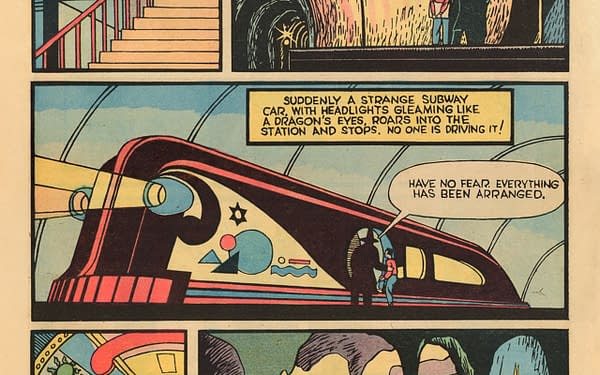
"Children Demand Thrillers" in 1940
And speaking of comic book thrills: If 1939 was the year that other publishers began to react to Superman, 1940 was the year that the world increasingly noticed the phenomenon that he had created. Victor Fox, who began to market his comic book features as newspaper comic sections as well this year, spoke to Editor and Publisher that April:
As president of Fox Publications, Inc., parent body of the Fox Comic Group, Mr. Fox is publisher of monthlies, bi-monthlies and quarterlies for which a 5,000,000 total circulation is claimed. In his interview last year Mr. Fox said newspapers would have to recognize sooner or later that the new comic trend is toward adventure strips.
"I hesitated then to use the more expressive term 'thriller,' as I stood alone in my prediction," Mr. Fox stated, "but since Mrs. Eleanor Roosevelt has now recently endorsed thrillers, I have no hesitancy in reiterating that child acceptance has changed the reading habits of newspaper comic section readers because children demand thrillers."
That newspaper editors and publishers have in the past been prejudiced against thriller type of comics, fearing that they would be criticized by parents of their child readers, and it might result in a loss of circulation, is well known.
The notoriously crafty Fox may have been referring to the Eleanor Roosevelt letter of mild general approval that had recently run on the inside front cover of All-American Comics #5, which she had written in response to a letter from M.C. Gaines. That said, Fox was not wrong. There were 57 comic books on the American newsstands at the start of the year (in itself a 35% increase over the previous month) and the stands were certainly dominated by hero-centric thrillers. Beyond Superman himself, the term "superhero" hadn't gained much traction yet as applied to comic book heroes. The term itself was in fairly wide use among the public, applied to war heroes, sports stars, and even comic strip characters. One early 1940 fanzine writer simply called them "Tough Guys".
There aren't too many comic books from 1939/1940 in the Promise Collection, but what's there is enormously important. And though readers of this period may not have called them superheroes quite yet, Junie's early favorites have become apparent: Batman and Captain Marvel. There's much more in store from the Promise Collection comic books of 1941, and we'll discuss that next time. Images and CGC grades will be added to the listings below as they become available, and in the meantime, you can check out what's already been revealed from the collection on the Heritage Auction site.
| Title | # | CGC Grade / Auction Links | Price Realized |
|---|---|---|---|
| Batman (1940) | 1 | ||
| Batman (1940) | 2 | ||
| Batman (1940) | 3 | ||
| Detective Comics | 33 | ||
| Detective Comics | 38 | ||
| Detective Comics | 39 | Detective Comics #39 CGC VG+ 4.5 Off-white pages | |
| Detective Comics | 43 | Detective Comics #43 CGC VG 4.0 Cream to off-white pages | |
| Detective Comics | 44 | Detective Comics #44 CGC VG/FN 5.0 Cream to off-white pages | |
| Detective Comics | 45 | Detective Comics #45 CGC FN/VF 7.0 Off-white to white pages | |
| Detective Comics | 46 | Detective Comics #46 CGC FN+ 6.5 Off-white pages | |
| New York World's Fair 1940 | 1 | ||
| Special Edition Comics | 1 | ||
| Whiz Comics | 2 | ||
| Whiz Comics | 3 | ||
| Whiz Comics | 7 | ||
| Whiz Comics | 9 |
- Detective Comics #39 The Promise Collection Pedigree (DC, 1940) CGC VG+ 4.5 Off-white pages.
- Detective Comics #43 The Promise Collection Pedigree (DC, 1940) CGC VG 4.0 Cream to off-white pages.
- Detective Comics #44 The Promise Collection Pedigree (DC, 1940) CGC VG/FN 5.0 Cream to off-white pages.
- Detective Comics #45 The Promise Collection Pedigree (DC, 1940) CGC FN/VF 7.0 Off-white to white pages.
- Detective Comics #46 The Promise Collection Pedigree (DC, 1940) CGC FN+ 6.5 Off-white pages.



